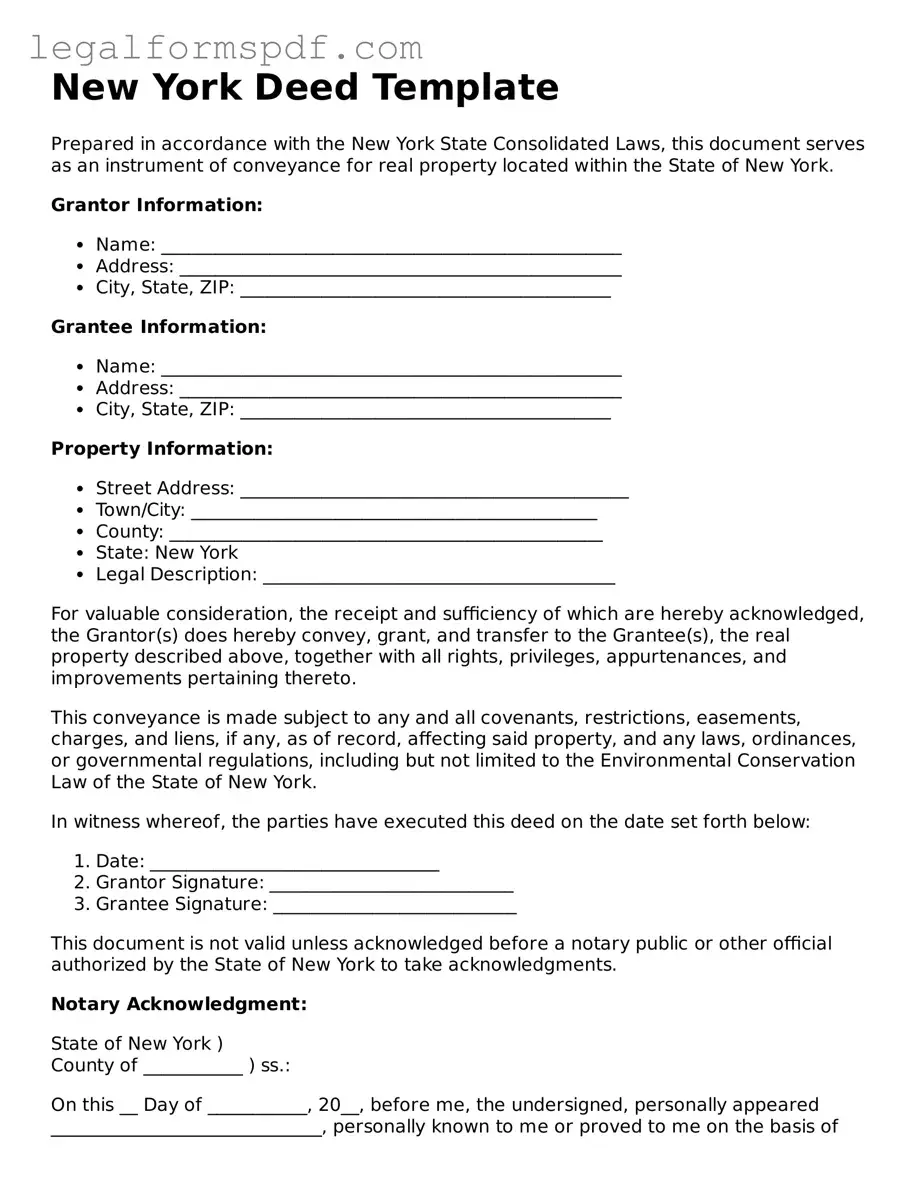What is a New York Deed Form?
A New York Deed Form is a legal document used to transfer ownership of real estate from one party to another in the state of New York. This form records the details of the transaction, including information about the buyer, seller, and the property itself.
Are there different types of Deed Forms available in New York?
Yes, there are several types of deed forms used in New York, including Warranty Deeds, which provide the highest level of protection to the buyer, Grant Deeds, and Quitclaim Deeds, which offer varying levels of protection and guarantees regarding the property's title.
Who needs to sign the New York Deed Form?
The seller of the property, also known as the grantor, must sign the deed form. Depending on the type of deed and local laws, the buyer might also need to sign the document. Signatures often need to be notarized to validate the document.
Does the New York Deed Form need to be notarized?
Yes, after the parties involved in the transaction sign the deed, it must be notarized. A notary public witnesses the signing and affixes their seal to the document, confirming the identities of the signatories.
What information is required on a New York Deed Form?
The form typically requires the legal description of the property, the names of the seller and buyer, the signature of the seller, and the amount of money exchanged for the property, if applicable. It should also include any conditions or warranties related to the property transfer.
Where can I find a New York Deed Form?
Deed forms can be obtained from legal form providers online, county clerk's offices, or through a real estate attorney who can also provide advice on which type of deed is most appropriate for your situation.
What should I do after completing a New York Deed Form?
Once the deed is completed and notarized, it should be filed with the county clerk's office where the property is located. This process, known as recording, is crucial for making the document part of the public record and legally transferring ownership.
Is there a fee to record a deed in New York?
Yes, recording fees vary by county. It is important to contact the local county clerk’s office to find out the exact fee. Additional taxes or fees may also apply depending on the specifics of the property transfer.
Can I fill out a New York Deed Form by myself?
While it is possible to fill out a deed form on your own, it's often advisable to consult with a real estate attorney. An attorney can help ensure that the deed is properly filled out and matches your individual needs and legal requirements, reducing the risk of future disputes or complications.
